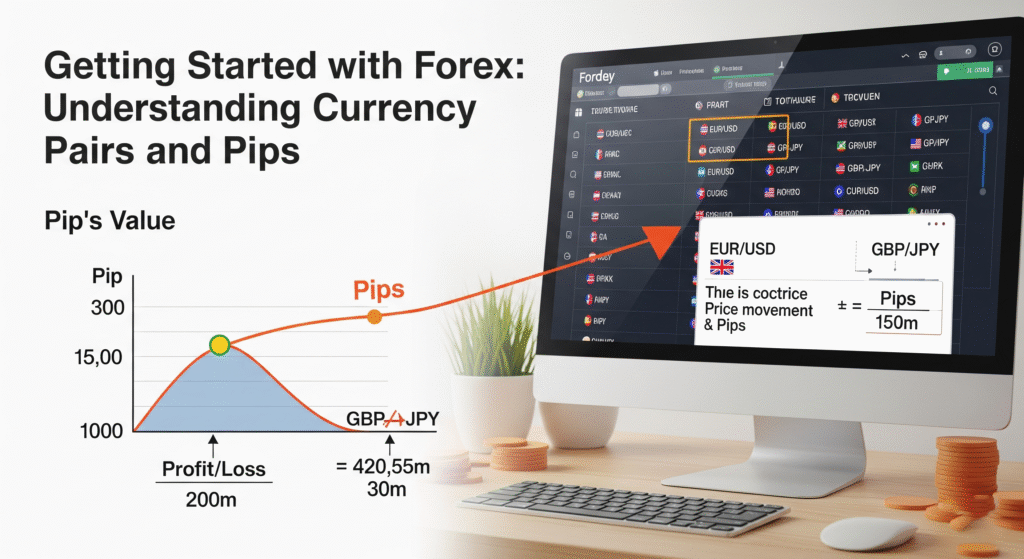He is a Full-time trader and Trading Mentor @ Findependence Trading Academy, with over 18 years of hands-on experience in the stock and forex markets. His journey from being a working professional to achieving financial independence through trading has inspired hundreds of aspiring traders to take control of their financial future.
His trading style revolves around identifying high-probability swing setups in equities and executing precise intraday trades in the forex markets. He treats trading like a business, where rules, clarity, and risk limits aren’t optional—they’re essential. He’s trained over 100+ traders through personalized coaching and structured programs, focusing not just on strategy but on building the mindset and systems that lead to long-term success.
A strong believer in keeping trading simple and practical, He shares real-world lessons drawn from market wins, losses, and years of evolving with changing conditions. He is also the author of “Getting Started with Technical Analysis” and a creator of custom TradingView indicators designed to give traders an edge.
When he’s not charting or mentoring, you’ll find him enjoying a game of Table Tennis.
Table of Contents
Forex Trading with a Prop Firm: Navigating the Currency Markets
A Human Guide to Trading Currencies Under the Watchful Eye of a Prop Firm
Let’s not sugarcoat it—forex trading is hard.
It’s fast. It’s emotional. & It’s global. It moves 24 hours a day.
Now add the pressure of trading someone else’s capital under strict rules, and you’ve got a whole new beast:
Forex trading in a prop firm environment.
I’ve spent nearly two decades in these markets—
From spot FX to currency futures, from swing trading to scalping, from blowing personal accounts to passing prop challenges.
And one truth has become painfully clear:
You u don’t trade the same when it’s not your money.
The stakes feel different.
Your psychology shifts.
The rules tighten.
And your edge—no matter how solid—is only as valuable as your ability to trade it within the boundaries a prop firm gives you.
If you’re serious about preparing for this reality, don’t wing it.
Build a rock-solid foundation through expert-led forex trading courses in Kothrud designed for real traders, not just demo champions.
In this post, I’ll walk you through what it’s really like to trade Forex with a prop firm—the good, the bad, and the honest.

Why Forex? Why Now?
Let’s start with the obvious:
- Forex is the most liquid market in the world (trillions traded daily)
- You can trade 24/5—from Tokyo open to New York close
- Currency pairs often respect structure and fundamentals beautifully
- And best of all, it’s accessible—with low spreads, tight execution, and high leverage (though limited by prop rules)
For prop firms, Forex is ideal. It’s clean, fast-moving, highly technical, and measurable. That’s why nearly all top prop firms offer FX as their primary asset class.
But trading currencies in a retail account is vastly different from trading them in a prop-funded account.
Let me show you why.
What Makes Forex Different in a Prop Firm?
1. The Capital Is Not Yours
This sounds obvious, but it changes everything.
In retail, blowing an account is heartbreaking—but it’s your money. In prop trading, you might only lose access to the account, but the emotional toll of being disqualified can hit harder than losing your own funds.
2. Strict Risk Rules
- Max Daily Drawdown: 4–5%
- Max Total Drawdown: 8–10%
- No over-leveraging or adding to losers
- One violation = account termination
Your freedom to trade recklessly is gone. And that’s actually a blessing in disguise—it forces you to become a true risk manager.
3. Execution is Everything
In prop trading, even a 1–2 pip slippage matters.
Why? Because you’re working on tight risk-reward profiles, and the firm watches how you enter, exit, and manage trades.
Sloppy scalping? Overtrading? Random entries? You won’t last long.
Prop Firms & FX: What You Need to Know
Let’s break down some key structural components of prop firm forex trading:
Permitted Pairs
Most firms allow:
- Major pairs: EUR/USD, GBP/USD, USD/JPY, USD/CHF
- Crosses: EUR/JPY, AUD/JPY, GBP/JPY
- Some allow exotics: USD/ZAR, USD/TRY—but watch spreads
Tip: Stick to majors and high-volume crosses unless you’re confident with volatility.
Holding Trades Overnight/Over Weekend
Some firms:
- Don’t allow holding over the weekend
- Require you to close before major news (NFP, FOMC)
- Penalize swap or high-risk holding behavior
If you’re a swing trader, make sure your firm allows it—or adapt your strategy.
Leverage in Prop Trading
Most prop firms cap leverage around 1:30 to 1:100—far lower than unregulated retail brokers.
But here’s the good part: you don’t need high leverage when you have $100K+ to trade.
Focus on risk-per-trade, not just position size.
Strategy Fit: What Works Best?
In my experience—and in working with 100+ traders through funded journeys—certain strategies just work better in a prop environment.
What Works:
- Low-risk trend following
- Trade with the HTF trend
- Use 1:2 or 1:3 R:R
- Take only clean, confirmed setups
- Trade with the HTF trend
- Intraday pullbacks
- Especially with confluences like S&D, EMA, and divergence
- Can help meet minimum trade day requirements
- Especially with confluences like S&D, EMA, and divergence
- Breakout + Retest patterns
- Especially effective in NY/London overlap
- Especially effective in NY/London overlap
What Struggles:
- High-frequency scalping
- Execution and slippage will destroy your edge
- Execution and slippage will destroy your edge
- Martingale or grid strategies
- Strictly forbidden by most prop firms
- Strictly forbidden by most prop firms
- Overexposure to correlated pairs
- Trading EUR/USD, GBP/USD, and AUD/USD at the same time?
That’s triple risk if dollar spikes.
- Trading EUR/USD, GBP/USD, and AUD/USD at the same time?
Psychology: The Real Battle
If there’s one thing prop firm trading teaches you fast—it’s emotional control.
In Forex, the speed of price movement can feel violent.
You’ll see setups go against you by 10 pips, then reverse beautifully.
Your heart rate spikes. Your palms sweat. You start to doubt yourself.
Now add this thought to the mix:
“If I hit -5% today, I’m done. I lose the challenge.”
Boom. Pressure. Paralysis. Poor decisions.
The solution?
- Trade smaller than you think you should
- Don’t aim for home runs—stack small wins
- Use a pre-trade checklist and stick to your session plan
Your job in prop trading isn’t to be right 100%—it’s to be predictable and professional.
Payouts: How FX Traders Get Paid in Prop Firms
You’ve passed the challenge. You’re trading a $100K account.
Now what?
Typical Payout Structure:
- 70%–90% of profits go to the trader
- Payouts after 14–30 days of being funded
- Paid via Deel, Wise, PayPal, or crypto (USDT, BTC, etc.)
Example:
You earn 6% on a $100K account = $6,000
Your split = 80% → You receive $4,800
That’s without risking your own capital.
Risk of Ruin: What Can Get You Disqualified?
Prop firms don’t just disqualify traders for losing too much money.
You can lose your account even if you’re profitable, but violate rules.
Here’s what to avoid:
- Violating max drawdown
- Holding over the weekend when not allowed
- Opening large positions before news
- Copy trading or bot usage (without permission)
- Logging in from flagged locations/IPs
Pro Tip: Read the firm’s rulebook like your funded life depends on it—because it does.
Scaling as an FX Trader in Prop Firms
This is where the real opportunity lies.
Most firms offer scaling plans, such as:
- Increase capital every 2–3 months by 25–100%
- Requires consistent profit, no rule violations
- Often comes with increased payout % and bonus perks
You start at $50K → $100K → $200K → $400K
Your income scales with your performance—not your deposit size.
Prop Forex Trading from India: The Legal Angle
This question comes up a lot:
“Is prop firm Forex trading legal in India?”
Here’s the nuanced answer:
- You’re not trading on Indian exchanges
- You’re trading simulated capital via offshore platforms
- Your income is classified as freelance/professional income, not “investment”
- You must declare earnings and pay tax under Indian tax laws
- Don’t send money abroad via LRS to ‘fund’ a trading account—that’s where it becomes risky
✔️ Use payment platforms like Wise or Deel for receiving payouts
✔️ Maintain a clean paper trail
✔️ Talk to a CA who understands international income
Final Thoughts: Trading FX With a Prop Firm Isn’t Easier—It’s Sharper
Let’s be clear: Prop firm trading doesn’t make Forex easier.
It just tightens the margins of error—and rewards those who can respect them.
You’ll learn to:
- Control your emotions
- Follow a plan
- Accept when you’re wrong
- Think in probability, not ego
- Become a risk manager, not just a trader
That’s what separates funded traders from hopeful amateurs.
Want to Get Started?
Here’s what I recommend:
- Backtest your strategy—prove your edge
- Simulate a prop firm challenge on demo for 30 days
- Start with a small evaluation ($10K–$25K)
- Track every trade. Log your emotions.
- When you’re consistent—go for it. But go in prepared.
In Closing: Trade to Stay in the Game
In my 18 years of trading, I’ve learned this the hard way:
“Anyone can get funded once. Staying funded? That’s where the game begins.”
If you’re serious about Forex trading—especially with prop firms—you have to embrace three things:
✅ Structure
✅ Discipline
✅ Humility
Because the market doesn’t care how confident you are.
And your prop firm definitely doesn’t care how much you “almost made.”
They care about one thing:
Did you follow the rules—and stay in the game?
So trade smart.
Trade small.
Trade sharp.
And most of all—remember:
You’re not here for one big trade.
You’re here for a career.
Want to build that career the right way? Start with real-world foundations through expert-led learn share market in Kothrud programs that teach you how to grow with consistency—not chaos.



